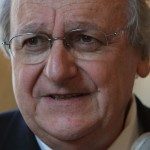Link to Pubmed [PMID] – 24034898
BMC Genomics 2013;14:623
Candida glabrata follows C. albicans as the second or third most prevalent cause of candidemia worldwide. These two pathogenic yeasts are distantly related, C. glabrata being part of the Nakaseomyces, a group more closely related to Saccharomyces cerevisiae. Although C. glabrata was thought to be the only pathogenic Nakaseomyces, two new pathogens have recently been described within this group: C. nivariensis and C. bracarensis. To gain insight into the genomic changes underlying the emergence of virulence, we sequenced the genomes of these two, and three other non-pathogenic Nakaseomyces, and compared them to other sequenced yeasts.


